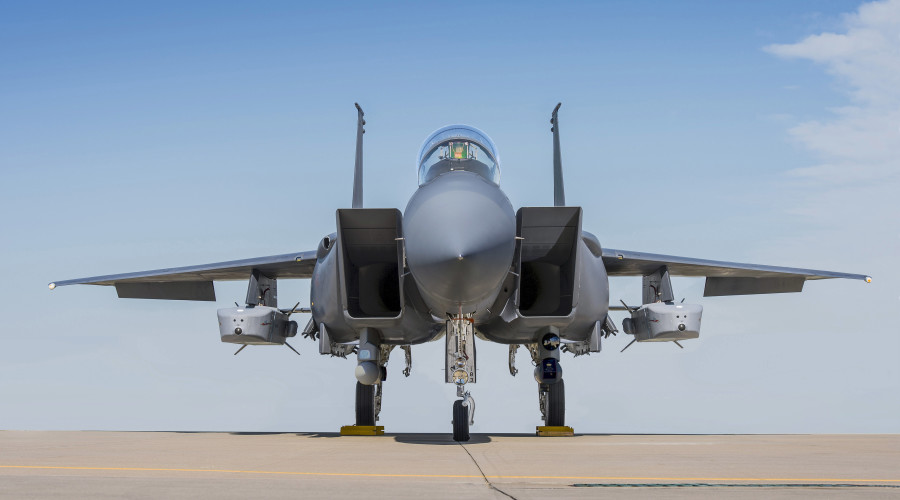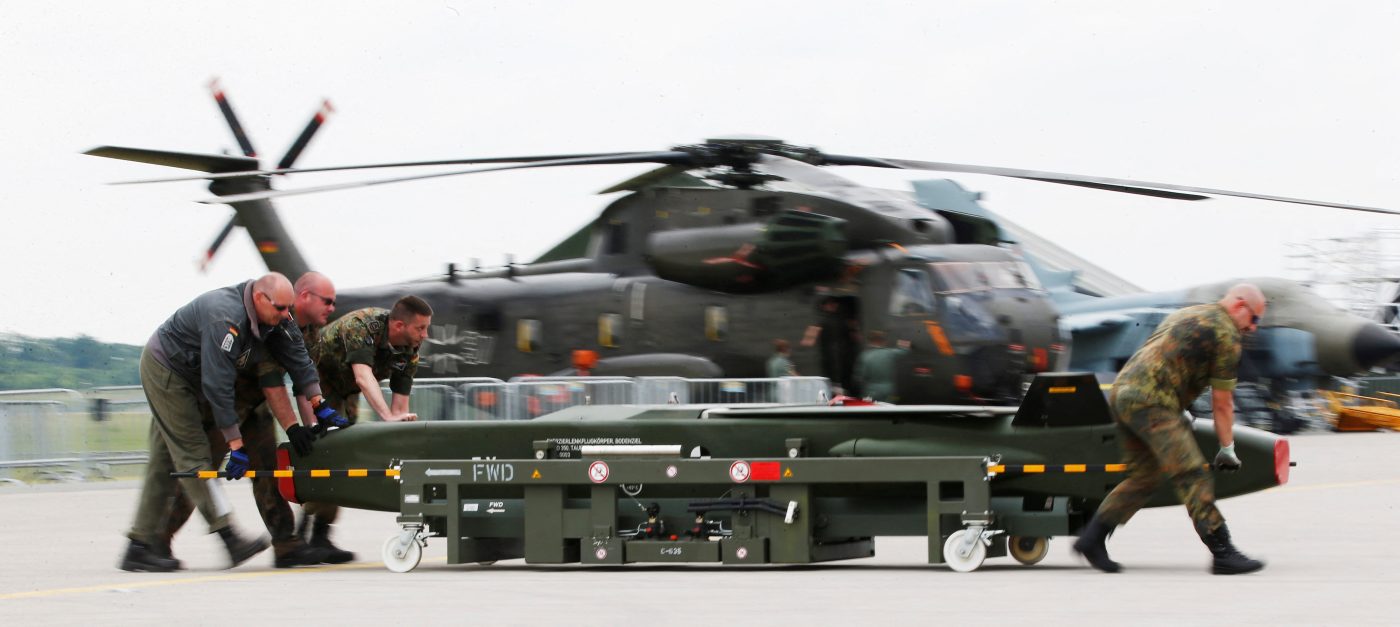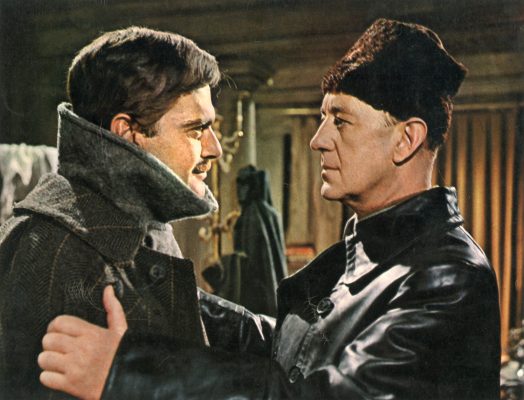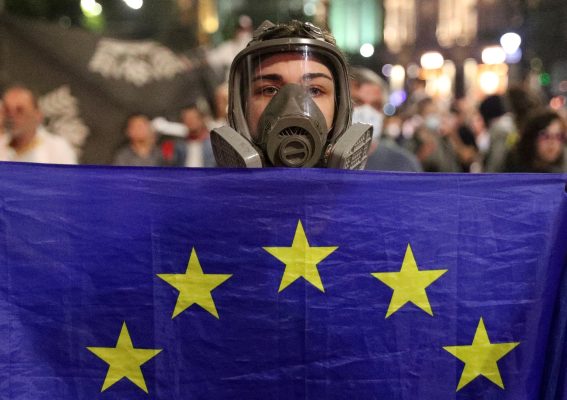Ukrainian drones and missiles have loosened the Russian blockade, damaged the Black Sea Fleet’s headquarters and docks in Sevastopol, destroyed numerous warships, and challenged Putin’s claims that he controls Crimea.
Ukraine’s two 2023 strikes on the Kerch Bridge — one acknowledged and one unconfirmed by Kyiv — caused backups for Russian materiel and spurred a chorus of demands to help Ukraine fully take out the key infrastructure.
The bridge is vital to the Russian occupation in Kherson and Zaporizhzhia oblasts and a testament to Putin’s commitment to holding onto his illegal annexations. Kyiv and its partners have every reason to want it destroyed. The problem isn’t recognizing it as a priority target, but giving Ukraine the weapons it needs to achieve the goal.
In July 2023, Ukrainian operatives used a new unmanned surface vessel to detonate 850 pounds (380 kilos) of explosives under one of the bridge’s support pillars. The blast forced the bridge to close, although such an attack had almost no chance of causing permanent damage.
Support columns and lower-height areas of the structure provide the obvious targets, but these sections are also the most structurally sound. A bomb — even a powerful bomb — detonating in the open air won’t destroy a modern suspension bridge. The shorter length spans of the Kerch Bridge also allow rapid replacement.
Ukraine needs missiles that can carry warheads to destroy a section of the bridge. And they need enough of them to overwhelm Russian air defenses and destroy multiple sections, making repair financially and practically impossible.
Germany’s Taurus KEPD 350 cruise missile provides exactly what Ukraine needs in one package: a “bunker-buster” warhead that can seriously damage concrete infrastructure, stealth technology to avoid Russian missile defense systems, and other electronic countermeasures.
Most importantly, Germany has 600 of the missiles, which have a range of more than 500km (310 miles), easily enough for a crippling strike on the Kerch Bridge. The missile warhead is 1,100lbs.
A single strike from an Anglo-French Storm Shadow missile’s slightly smaller 990lb warhead blew a sizable hole through the Chongar Bridge in northern Crimea in June. While this attack showed the accuracy of modern cruise missiles and the potential for bridge-busting, it also demonstrated the need to saturate the Kerch Bridge to obliterate its military value.
It is also vital to disrupt Russian air defenses before the attack — the strike on the Black Sea Fleet Headquarters in Sevastopol, for example, used drones and radar spoofing. Ukraine is also committed to hitting Russian radar when and where it can; encouragingly, Storm Shadow missiles, with a range of less than 300km, have consistently evaded Russian air defenses in Crimea.
There is little doubt that Ukraine’s suppression of Russian air defenses, when coupled with the Taurus’ stealth technology, would have similar success. The longer range of the Taurus would protect Ukrainian bombers, which would be needed for force preservation and immediate follow-up strikes on the damaged Russian logistic chain.
A steady supply of Storm Shadows/SCALP, and German Tauruses, would give Ukraine a new set of options for its air campaign, while the diversity of supply would be an important signal of European unity.

A broader-based arsenal would also upset Russian operational planning. Not only would more targets be threatened, but it would also be harder for Russia to know where the next sorties would hit.
Russia has failed to knock out Ukrainian bombers, and the delivery of Taurus missiles would force the Kremlin’s air force to put at risk more of its attack and radar planes, priceless air assets it can’t afford to lose (and which it has been losing in recent Ukrainian attacks.)
A rumor that the UK offered to purchase Taurus missiles for its own stocks and send more Storm Shadow missiles to Ukraine in return has been denied by Berlin. German opposition leaders said such a decision would be an embarrassment to Germany and its leadership in Europe.
“Ukraine needs Taurus, and it needs it now,” Marie-Agnes Strack-Zimmerman, chair of the German Parliament’s Defense Committee, told Handelsblatt. “Storm Shadow is not an equivalent replacement. In this respect, the proposal is unsuitable.”
Unlike the US, which must balance Pacific and European defense commitments with its sluggish defense industry base, there’s no compelling argument for Europeans to hold back weapon supplies. Ukraine is using other German weapons to destroy Russian military targets so Germany won’t have to fight with its own weapons against Russia.
Michael C. DiCianna is a research assistant with the Yorktown Institute.
Europe’s Edge is CEPA’s online journal covering critical topics on the foreign policy docket across Europe and North America. All opinions are those of the author and do not necessarily represent the position or views of the institutions they represent or the Center for European Policy Analysis.





